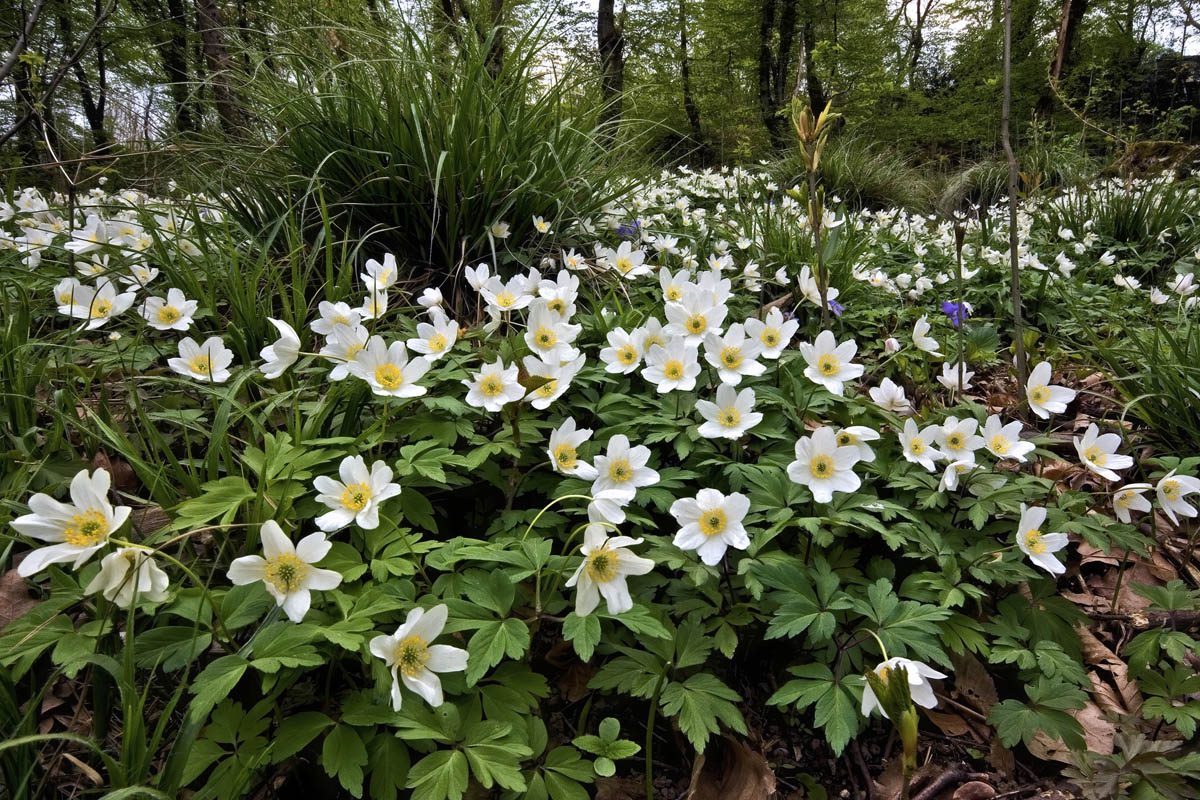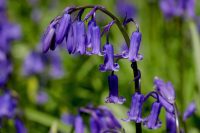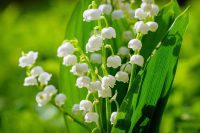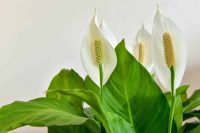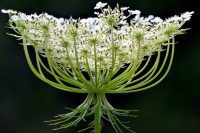What is Wood Anemone? Appearance Life Cycle Where is the Best Place to Plant Wood Anemone? How to Sow Wood Anemone Seeds Growing Wood Anemone From Rhizomes How Does Wood Anemone Reproduce? How Fast Do Wood Anemones Spread? Growing Wood Anemone in the Garden Caring for Wood Anemones Dividing Wood Anemones Ecological Importance of Wood Anemone
What is Wood Anemone?
Wood anemone (Anemone nemorosa), is a low-growing, rhizomatous herbaceous perennial in the buttercup family, native to the woodlands of Europe.
These spring ephemerals are one of the first plants to bloom, providing an abundance of single, white flowers, with prominent yellow stamens. Along with bluebells and wild garlic, the wood anemone is indicative that the woodland is ancient.
In the home garden, wood anemone makes a beautiful landscape flower in shady areas.
Name Origins
The name Anemone nemorosa means “windflower of the woods.”
- Anemone comes from the Greek word ‘ánemos’ (άνεμος) which means ‘wind‘, hence the common name ‘windflower’.
- Nemorosa is derived from the Latin word ‘nemoris‘, which means ‘of the forest‘, reflecting the natural habitat of wood anemone.
| Anemone nemorosa |
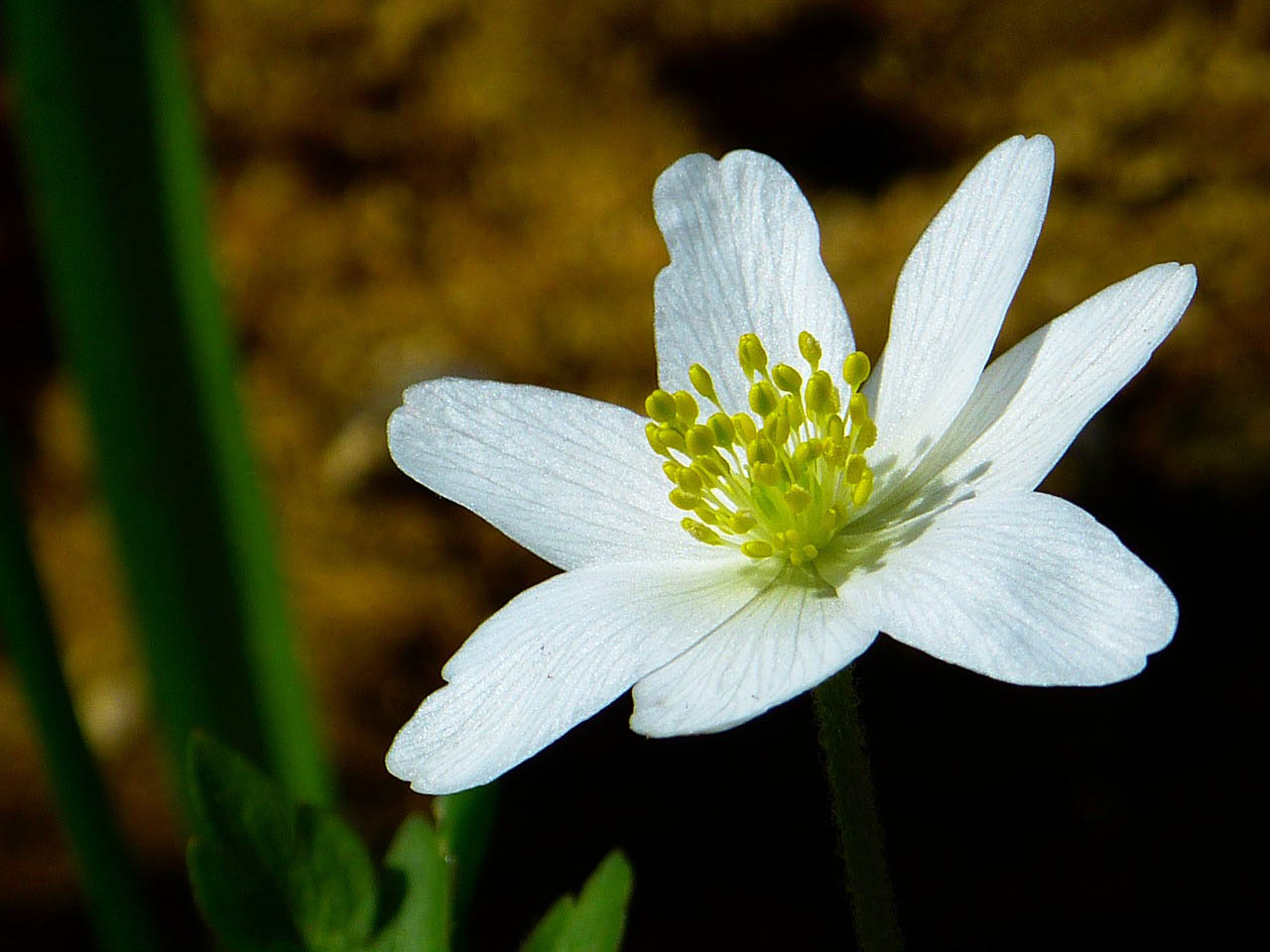 |
|
Appearance
The wood anemone grows to a mature height of 25 cm with a spread of 30-60 cm. As rhizomes spread beneath the ground, wood anemone slowly forms a carpet on the woodland floor.
Leaves
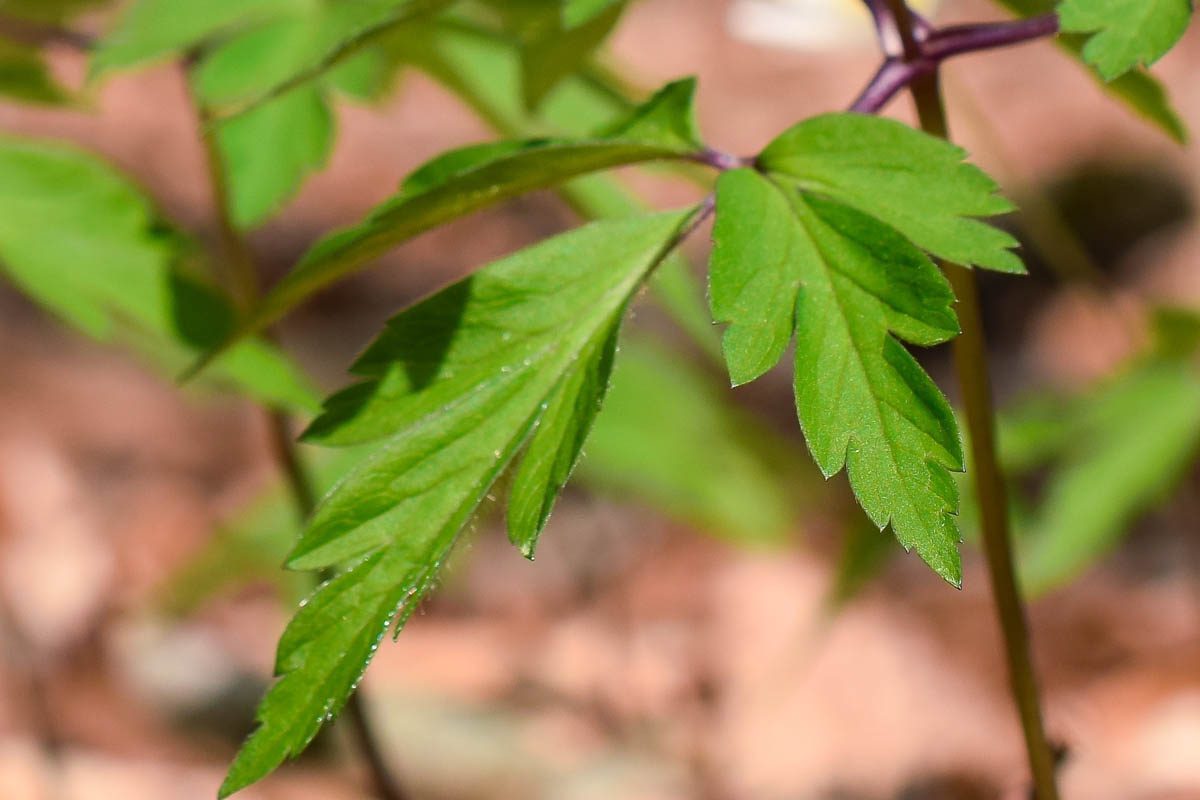
Wood anemones have 2.5-5 cm long palmately lobed leaves divided into three main segments, with each segment further divided into narrower lobes, which gives them a feathered appearance. The leaf margins are irregularly toothed, and the leaves are arranged in whorls where they attach at the same point on the stem, below the flowers.
Flowers
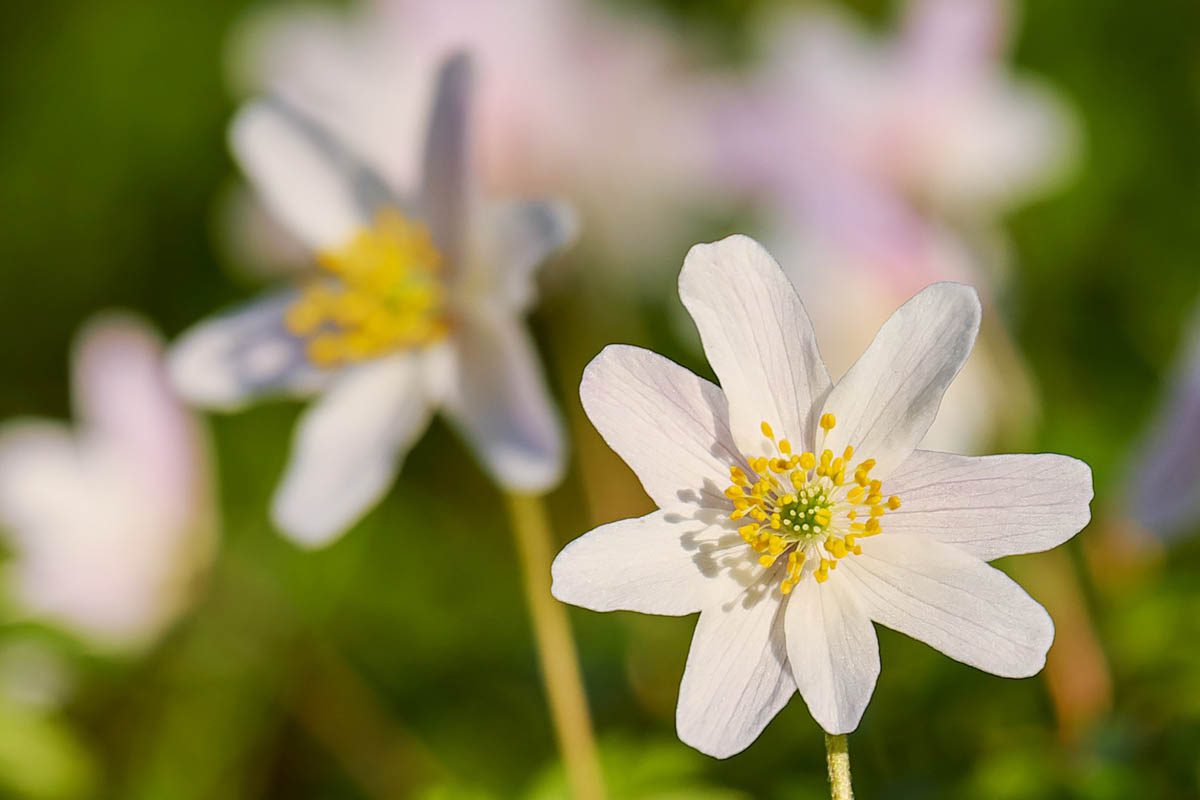
Each flower has five to eight petal-like sepals, which are usually pure white but can sometimes have a pink or lilac tinge, on the reverse side. Sepals surround a cluster of yellow stamens at the centre. The flowers are 2.5 cm in diameter, and the shape is described as “radial” or “actinomorphic.” This means that the flower can be divided into two mirror-image halves in multiple ways along its central axis.
When in full bloom, wood anemone flowers have an open, star-shaped appearance, but close at night or during overcast weather to protect the pollen.
Life Cycle
The wood anemone is a spring ephemeral, which means it quickly goes through its growth cycle early in the spring. It emerges in March to April, blooms, grows vegetatively and dies back in a short time frame. This allows the wood anemone to take advantage of available sunlight that reaches the forest floor before the canopy of deciduous trees leafs out.
The leaves emerge from the underground twig-like rhizome (an underground horizontal stem) in late winter to early spring. This is followed by the emergence of its star-shaped white flowers. Hoverflies and bees are major pollinators of wild anemones, and after pollination, pods develop from the flowers. The achenes, which have fatty attachments called elaiosomes, are dispersed by wind and ants that are attracted to these structures.
After flowering, the wood anemone continues to grow vegetatively. During this vegetative phase, the plant will grow leaves that photosynthesize to produce simple sugars. These simple sugars are converted to more complex carbohydrates in a process known as biosynthesis.
These complex carbohydrates are transported through the plant’s phloem, the vascular tissues that distribute nutrients throughout the plant. Once the carbohydrates reach the rhizomes, they are converted back into starches or other storage forms. These storage carbohydrates are packed into the cells of the rhizomes. This energy reserve is crucial for the plant to survive dormancy and regenerate the following year.
During this period, the rhizomes may spread, leading to the growth of new plants. By late summer the above-ground parts of the wood anemone begin to die back and the plant remains dormant from autumn until late winter. Energy is conserved in the rhizomes, which will remain dormant throughout the winter.
Each spring, the cycle begins with the rhizomes sending up new shoots. In the right habitat, wood anemones can form extensive carpets of flowers over time as their rhizomes slowly spread. They can also propagate through seed, although this is a less common method of reproduction for them.
Where is the Best Place to Plant Wood Anemone?
Wood anemones flourish under the canopy of deciduous trees, which provide dappled sunlight. The light conditions simulate the natural opening and closing of the woodland canopy through the seasons.
Soil should retain moisture without becoming too waterlogged. Incorporate organic matter such as mushroom compost or cow manure to improve soil structure, moisture holding abilities and provide nutrients for optimal plant growth.
How to Sow Wood Anemone Seeds
Sowing wood anemone seeds is a challenge due to their complex germination requirements, as well as the high percentage of sterile seeds.
The best time to sow wood anemones is in autumn when the seeds are fresh, and they will experience a period of cold stratification over winter. If growing in spring, seeds will need a period of cold stratification for 12 weeks. Place in a plastic bag in the refrigerator.
- Location: Sow seeds in full shade to dappled sun.
- Seed selection: Always select fresh seeds in late summer or early autumn. The seeds should be dry, brown and fall easily out of the seedheads when shaken. Check with local authorities if you plan to collect wood anemone seeds from the wild.
- When to sow: If growing in autumn, sow the seeds in a container of soil or directly into a garden bed. Place the seeds on top of the soil mix as wood anemone seeds require light to germinate. Spring-sowed wood anemone seeds will have had to be cold-stratified before sowing (see above).
- Watering: Water the seeds with a fine mist to settle the soil and ensure good seed-to-soil contact. Adequate moisture is crucial after cold stratification for the seeds to absorb water, which triggers the expansion and breaking of the seed coat.
- Time to germinate: It typically takes 3-4 weeks for wood anemone seeds to germinate, but may take longer.
Growing Wood Anemone From Rhizomes
Wood anemone has developed a reproductive strategy that emphasizes vegetative propagation over seed dispersal. This is an adaptation to the stable, often undisturbed environments where it typically thrives, such as deciduous woodlands. Rhizomes should be healthy and firm, avoid dry, overly soft or shrivelled ones.
The best time to plant your wood anemone rhizomes is in autumn, a few weeks before the first frost. This will allow them to establish a healthy root system before winter.
- Prepare the soil by loosening it to a depth of 30 cm, and mix in some compost or well-rotted cow manure.
- Soak the rhizomes in water a few hours before planting to rehydrate them.
- Plant the rhizomes horizontally in the soil about 5-7.5 cm deep, and about 10-15cm apart.
- After planting, water the soil thoroughly to help it settle around the rhizomes.
- Apply a layer of mulch after planting to conserve water and protect from harsh weather conditions.
- As the plants emerge in spring, maintain water, especially if the weather is dry. Be careful not to overwater.
- Apply a light application of a well-balanced fertiliser.
Remember, wood anemones die back after they have produced seeds, but will return the following spring.
How Does Wood Anemone Reproduce?
Wood anemone reproduces sexually through seed production and vegetatively through rhizomatous growth. The rhizomes grow horizontally just below the soil surface. As they grow, they extend outward from the parent plant they produce adventitious roots and shoots at nodes along their length. The roots anchor the rhizomes into the soil, while the shoots will grow upwards to become new above-ground plants. Rhizomatic growth is an effective way for the wood anemone to propagate itself, particularly in shady woodland areas where seed germination may be less reliable.
Flowers appear in spring and are pollinated by insects, leading to the production of seeds. Once the seeds mature, they are dispersed into the environment. Germination is a slow process, as wood anemones require a period of cold stratification to mimic the cold of winter.
How Fast Do Wood Anemones Spread?
Wood anemones are known to spread slowly and it is said that they can take up to 100 years to spread across a distance of about 2 metres, which equates to 2 cm per year. The rate at which wood anemones spread can vary depending on soil conditions, moisture, light, and competition from other plants.
Growing Wood Anemone in the Garden
Wood anemone is a shade-loving plant that is ideal for low-light areas such as under trees or in sheltered nooks. This characteristic allows wood anemone to illuminate low-light areas with its delicate blossoms, creating a woodland feel. With its adaptability to cooler, shaded areas, the wood anemone is an excellent choice for gardeners looking to bring life and colour to less sunny spots that might challenge other sun-seeking plants.
Wood anemone forms dense carpets of lush foliage over time, which makes it an excellent ground cover in shady areas. This dense growth in woodlands can help stabilise soil and prevent erosion during prolonged rainy seasons.
Caring for Wood Anemones
Provide a woodland-like environment with dappled shade or partial sun, and maintain a well-draining, nutrient rich soil. Keep the soil consistently moist, but be careful not to over-water which can lead to root rot.
Apply a light layer of compost or a balanced fertiliser with an equal ratio of Nitrogen (N), Phosphorus (P), and Potassium (K), such as a 10-10-10 or a 14-14-14.
- Nitrogen (N) helps with leafy, vegetative growth.
- Phosphorus (P) is important for root development and flower production.
- Potassium (K) is essential for the overall health and vigour of the plant.
Since wood anemones are grown primarily for their flowers, and they have a period of dormancy after flowering, it’s not necessary to apply a high-nitrogen fertiliser. A balanced fertiliser will ensure that the plants have all the nutrients they need for healthy root development, flowering, and overall growth.
During winter, protect the rhizomes in colder regions by adding an extra layer of mulch, and avoid excessive disturbance around the plant’s root zone.
Dividing Wood Anemones
The best time to divide wood anemones is in the late summer or early autumn after the foliage has died back and the plants are dormant.
- Gently dig around the clump of anemones you want to divide, being careful not to damage the rhizomes. Lift the clump out of the soil with as much of the root system intact as possible.
- Shake away any remaining soil and remove dead foliage from the rhizomes.
- Carefully tease apart the rhizomes with a sharp knife (I find a bread knife is the best tool to divide underground stems and rhizomes). Each section should have at least one growth point (bud) from which new shoots can emerge.
- Plant the newly divided rhizome sections immediately at a depth of 10 cm (4 inches). Provide plenty of space between them for growth.
- Keep the soil moist but not waterlogged as the rhizomes establish themselves. Mulching can help to retain moisture and suppress weeds.
Ecological Importance of Wood Anemone
Wood anemone plays an important role in the ecosystem of temperate woodlands. As one of the first spring flowers to bloom, it provides early-season nectar for pollinators like bees, hoverflies and beetles. These insects are critical for the pollination of many other plant species, thus supporting the entire woodland food web.
Indicator of Ancient Woodland
The presence of wood anemones is an indicator of an ancient woodland, which are forests that have existed since 1600. Wood anemone contributes to the diversity of the ecosystems and its preference for stable, undisturbed habitats means that large colonies are a sign that the woodland is healthy and thriving.
Soil Stabilisation and Nutrient Cycling
The dense carpet of foliage formed by wood anemones stabilises the soil and reduces erosion, particularly in the spring when other plants have not yet grown. This ground cover acts as a mulch to maintain soil moisture levels. As the leaves die back, they decompose and add organic matter to the soil, enhancing its structure and fertility and promoting nutrient cycling.
Symbiotic Relationships
Wood anemone has a symbiotic relationship with ants (myrmecochory). The seeds of the wood anemone have a fatty appendage called an elaiosome, which attracts ants. The ants take the seeds to their nests to feed on the elaiosomes, thereby aiding in the dispersal of the seeds away from the parent plant. This process ensures wider colonisation and genetic diversity within the species.
Habitat for Fauna
The lush foliage provides a habitat for many small animals and invertebrates. The microclimate under the leaves can be a haven for small mammals, amphibians, and insects, offering them protection from predators and harsh weather.
Conservation and Biodiversity
By conserving wood anemone and its habitat, we are protecting a whole suite of associated species. The decline of native woodlands can lead to a loss of these plants and the complex web of life that depends on them. Efforts to conserve wood anemone habitats contribute to broader conservation goals, such as maintaining biodiversity, protecting native species, and preserving the ecological functions of our woodlands.
Is Wood Anemone Toxic to Cats and Dogs?
Wood anemone is toxic to both dogs and cats. The toxic compound is protoanemonin, which can be irritating and harmful to pets if ingested. If a dog or cat consumes parts of the wood anemone plant, they may experience symptoms such as vomiting, diarrhea, drooling, or abdominal pain. Contact with the plant can also cause skin irritation.
Given the irritant properties of anemonin and its potentially harmful effects, it is advisable to handle plants containing this compound with caution and to keep them away from pets and children.
Wood Anemone Story
Anemone was a beautiful nymph, and Zephyrus, one of the four Anemoi (wind gods)-Boreas (North), Zephyrus (West), Notus (South) and Eurus (East).
Zephyrus (also known as Zephyr) the god of the west wind, was married to Chloris (also known as Flora), the goddess of flowers and spring. When Flora discovered her husband’s affection for Anemone, she used her powers to turn Anemone into a flower, so she could no longer be with Zephyr.
Flora cast a spell that transformed Anemone into a delicate flower, causing Zephyr to lose interest in her. Boreas, the god of the north wind fell in love with Anemone, despite her being a flower. However, Anemone was not interested in him. In his frustration at being rejected, Boreas used his chilling winds to blow open the petals of Anemone.
Zephyr loses interest in Anemone as a flower preferring her as a nymph. However, Boreas another wind god (North Wind) represented the winter winds, fell in love with her despite her being a flower.
Boreas tried in vain to woo her but Anemone was not at all interested in him. An angry Boreas blows on her petals every spring.
Julia is a writer and landscape consultant from Wollongong with a love of horticulture. She had been an avid gardener for over 30 years, collects rare variegated plants and is a home orchardist. Julia is passionate about learning and sharing her knowledge of plant propagation and plant toxicology. Whether it’s giving advice on landscape projects or sharing tips on growing, Julia enjoys helping people make their gardens flourish.
